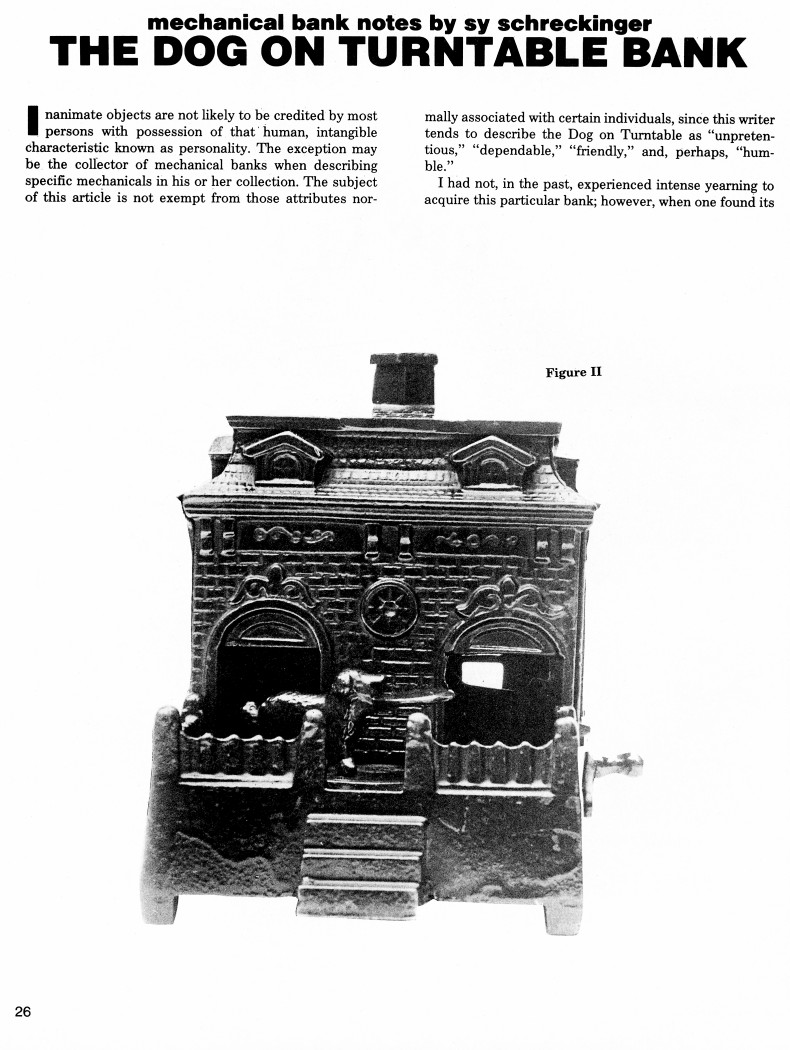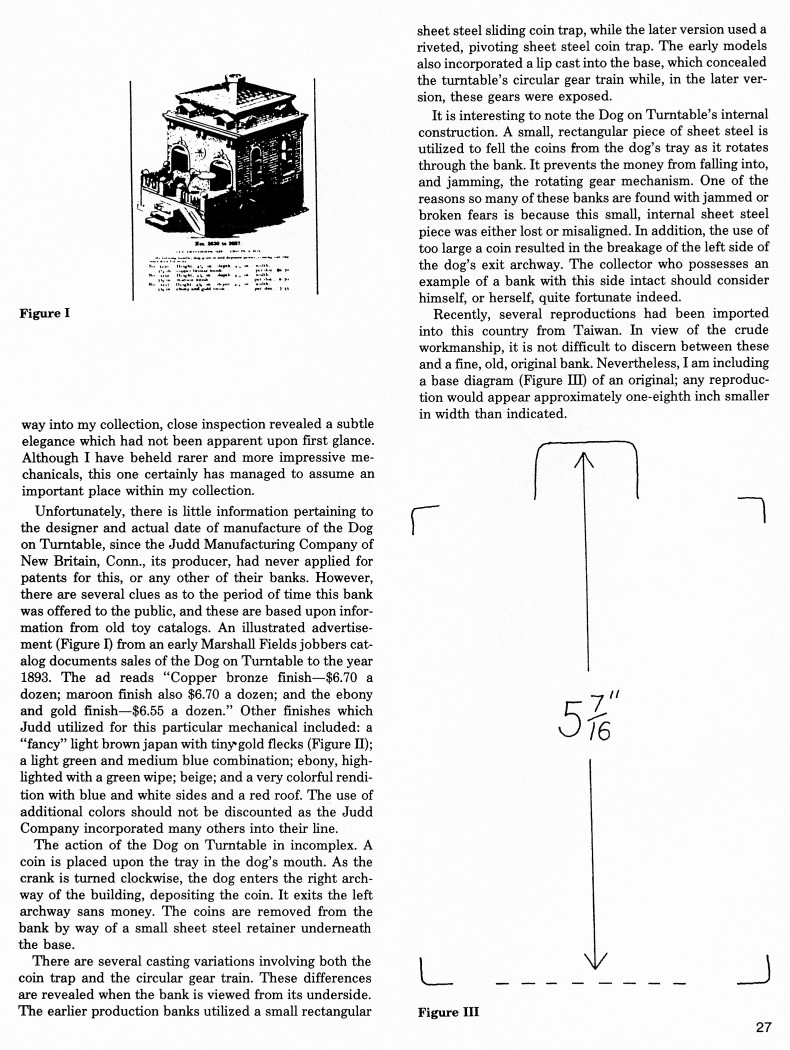|
The Dog on Turntable
Bank
by Sy Schreckinger – ANTIQUE TOY WORLD Magazine – September,
1987
Inanimate objects
are not likely to be credited by most persons with possession of that
human, intangible characteristic known as personality. The exception may
be the collector of mechanical banks when describing specific mechanicals
in his or her collection. The subject of this article is not exempt from
those attributes normally associated with certain individuals, since this
writer tends to describe the Dog on Turntable as "unpretentious,"
"dependable," "friendly," and, perhaps, "humble."
I had not, in the past, experienced intense yearning to acquire this
particular bank; however, when one found its way into my collection, close
inspection revealed a subtle elegance which had not been apparent upon
first glance. Although I have beheld rarer and more impressive
mechanicals, this one certainly has managed to assume an important place
within my collection.
Unfortunately, there is little information pertaining to the designer
and actual date of manufacture of the Dog on Turntable, since the Judd
Manufacturing Company of New Britain, Conn., its producer, had never
applied for patents for this, or any other of their banks. However, there
are several clues as to the period of time this bank was offered to the
public, and these are based upon information from old toy catalogs. An
illustrated advertisement (Figure I) from an early Marshall Fields jobbers
catalog documents sales of the Dog on Turntable to the year 1893. The ad
reads "Copper bronze finish—$6.70 a dozen; maroon finish also $6.70 a
dozen; and the ebony and gold finish—$6.55 a dozen." Other finishes which
Judd utilized for this particular mechanical included: a "fancy" light
brown japan with tiny, gold flecks (Figure R); a light green and medium
blue combination; ebony, highlighted with a green wipe; beige; and a very
colorful rendition with blue and white sides and a red roof. The use of
additional colors should not be discounted as the Judd Company
incorporated many others into their line.
The action of the Dog on Turntable in incomplex. A coin is placed
upon the tray in the dog's mouth. As the crank is turned clockwise, the
dog enters the right archway of the building, depositing the coin. It
exits the left archway sans money. The coins are removed from the bank by
way of a small sheet steel retainer underneath the base.
There are several casting variations involving both the coin trap and
the circular gear train. These differences are revealed when the bank is
viewed from its underside. The earlier production banks utilized a small
rectangular sheet steel sliding coin trap, while the later version used a
riveted, pivoting sheet steel coin trap. The early models also
incorporated a lip cast into the base, which concealed the turntable's
circular gear train while, in the later version, these gears were exposed.
It is interesting to note the Dog on Turntable's internal
construction. A small, rectangular piece of sheet steel is utilized to
fell the coins from the dog's tray as it rotates through the bank. It
prevents the money from falling into, and jamming, the rotating gear
mechanism. One of the reasons so many of these banks are found with jammed
or broken gears is because this small, internal sheet steel piece was
either lost or misaligned. In addition, the use of too large a coin
resulted in the breakage of the left side of the dog's exit archway. The
collector who possesses an example of a bank with this side intact should
consider himself, or herself, quite fortunate indeed.
Recently, several reproductions had been imported into this country
from Taiwan. In view of the crude workmanship, it is not difficult to
discern between these and a fine, old, original bank. Nevertheless, I am
including a base diagram (Figure 111) of an original; any reproduction
would appear approximately one-eighth inch smaller in width than
indicated.
|


